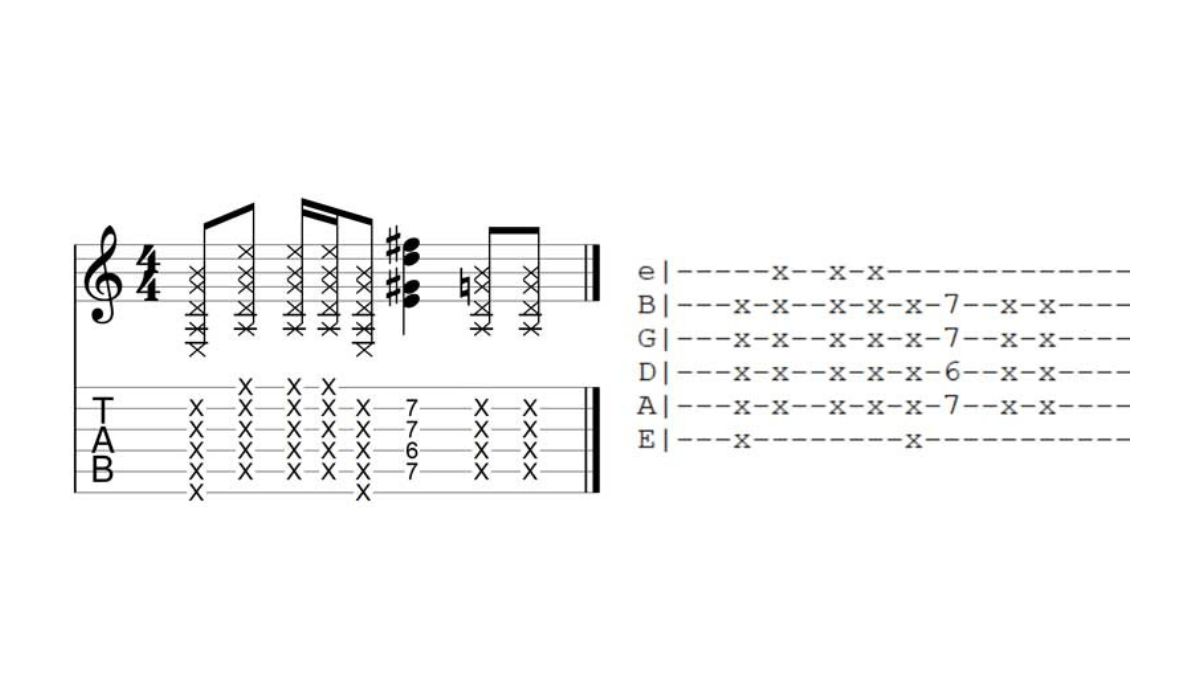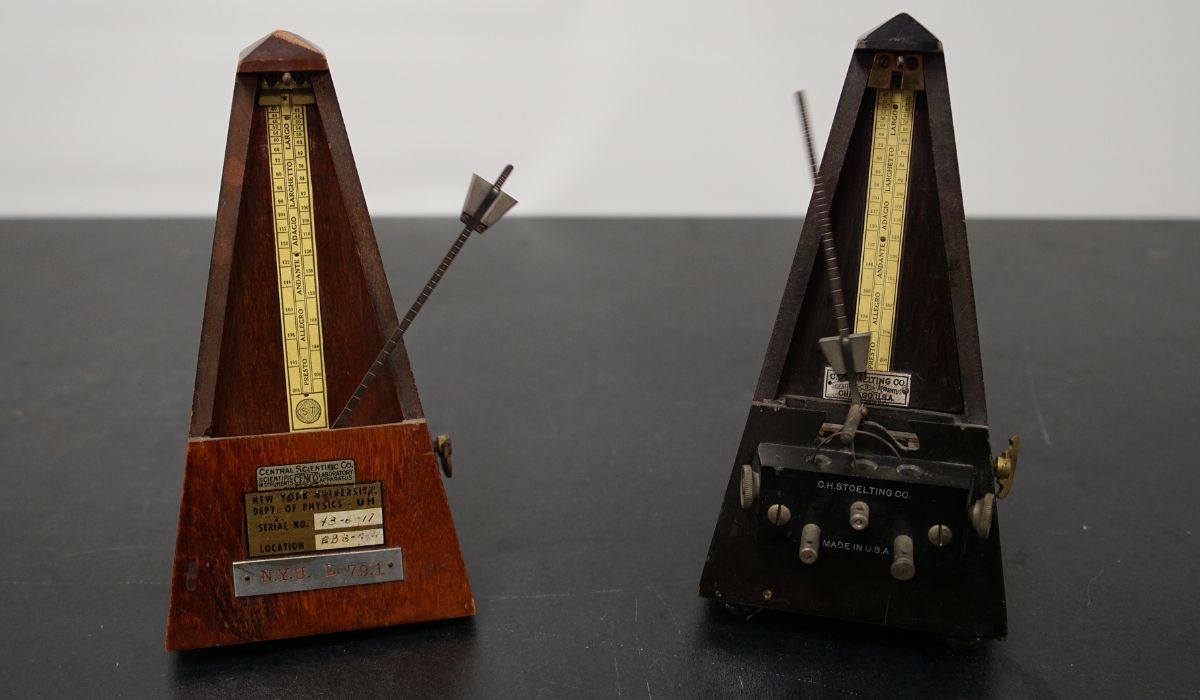Home>Instruments>Guitar>What Does “X” Mean In Guitar Tab


Guitar
What Does “X” Mean In Guitar Tab
Published: February 15, 2024
Discover the meaning of "X" in guitar tab and enhance your understanding of guitar notation. Learn how to interpret "X" in guitar tab and improve your playing.
(Many of the links in this article redirect to a specific reviewed product. Your purchase of these products through affiliate links helps to generate commission for AudioLover.com, at no extra cost. Learn more)
Table of Contents
Introduction
Understanding Guitar Tablature
When it comes to learning to play the guitar, understanding tablature is essential. Guitar tablature, often abbreviated as “tab,” is a popular notation system used by guitarists to depict the strings and frets of the instrument. Unlike traditional sheet music, which uses standard notation to represent the pitch and duration of notes, guitar tablature provides a visual representation of the guitar’s fretboard, making it easier for beginners to grasp and play their favorite songs.
Tablature consists of six horizontal lines, each representing a string on the guitar. The numbers placed on these lines indicate which frets to press down, allowing players to recreate melodies and chords with relative ease. However, in addition to numbers, guitar tablature may also feature various symbols that convey specific techniques, such as slides, bends, hammer-ons, pull-offs, and muted notes.
One such symbol that holds significance in guitar tablature is the “X.” Understanding the meaning of “X” in guitar tab is crucial for mastering the instrument and accurately interpreting musical pieces. In this article, we will delve into the significance of “X” in guitar tablature, providing insights and examples to illuminate its role in shaping the guitar’s sonic landscape.
Understanding Guitar Tablature
Before delving into the meaning of “X” in guitar tablature, it’s important to grasp the fundamentals of this notation system. As mentioned earlier, guitar tablature consists of six lines, each representing a string on the guitar. The top line corresponds to the highest-pitched string (usually the high E string), while the bottom line represents the lowest-pitched string (typically the low E string).
Numbers placed on these lines indicate which frets to press down when playing a particular note or chord. For instance, if the number “3” is written on the third line, it signifies that the player should press down the third fret on the corresponding string. This visual representation of frets and strings simplifies the learning process for aspiring guitarists, offering a more intuitive approach compared to traditional sheet music.
Moreover, guitar tablature accommodates various techniques and articulations through the use of symbols. These symbols provide instructions on how to execute specific playing styles, such as slides, bends, vibrato, and harmonics. By incorporating these nuances into tablature, guitarists can accurately replicate the expressiveness of a song, capturing its intricacies and emotive qualities.
Understanding guitar tablature empowers players to navigate the fretboard with confidence, enabling them to explore diverse musical genres and expand their repertoire. Aspiring guitarists often find tablature to be an accessible entry point into the world of music, fostering a sense of accomplishment as they learn to play their favorite songs.
The Meaning of “X” in Guitar Tab
Within the realm of guitar tablature, the symbol “X” serves a specific and crucial purpose. When “X” appears on a string in a tab, it indicates that the string should be muted or not played. This means that the player should rest their fretting hand lightly on the string without pressing it down on any fret, resulting in a percussive, muted sound when the string is strummed or plucked.
The muted string, denoted by “X,” adds depth and rhythmic dynamics to a musical piece, contributing to the overall texture and groove of the song. Guitarists often employ muted strings to create syncopated rhythms, funky grooves, and staccato effects, enhancing the musicality and energy of their performances.
Understanding the role of “X” in guitar tablature is essential for executing songs accurately and capturing their distinctive feel. Whether playing rock, funk, reggae, or other genres that rely on rhythmic precision, mastering the art of muting strings with “X” markings is vital for achieving an authentic and polished sound.
Furthermore, “X” can also symbolize a muted note within a chord. In chord diagrams found in guitar tablature, an “X” placed above a string indicates that the string should not be struck or sounded when playing the chord. This muted string within a chord contributes to its harmonic richness and rhythmic complexity, elevating the musical arrangement and adding depth to the overall sonic tapestry.
By recognizing the significance of “X” in guitar tablature, aspiring guitarists can refine their technique and expand their expressive capabilities, infusing their playing with nuance and rhythmic flair. Embracing the muted strings denoted by “X” opens up a world of creative possibilities, allowing players to craft compelling and dynamic performances across diverse musical styles.
Examples of “X” in Guitar Tab
To illustrate the practical application of “X” in guitar tablature, let’s explore a few examples that showcase its usage in different musical contexts:
Example 1: Rhythmic Muting in Funk Guitar
In funk guitar playing, rhythmic muting with “X” markings is prevalent, contributing to the genre’s signature tight and percussive sound. A typical funk guitar riff may feature “X” symbols on specific strings, indicating where the player should execute muted strums to punctuate the rhythm. This technique creates a crisp and funky groove, driving the music forward with infectious energy and precision.
Example 2: Chord Embellishments in Reggae Guitar
Reggae guitarists often incorporate muted strings within chord voicings to enhance the rhythmic propulsion and skank feel of the music. In reggae guitar tablature, chords may include “X” markings above certain strings, signaling that those strings should be lightly muted to achieve the characteristic staccato effect essential to reggae’s laid-back yet vibrant groove.
Example 3: Muted Note in Chord Progressions
Within chord progressions, “X” symbols can denote muted notes that contribute to the overall texture and groove of a song. For instance, in a chord progression for a rock ballad, an “X” placed above a string within a chord diagram signifies that the corresponding string should be muted, adding a subtle percussive element and reinforcing the song’s emotive quality.
By incorporating “X” symbols in these diverse musical examples, guitar tablature effectively communicates the nuanced techniques and rhythmic nuances essential to each genre’s distinct sound and feel. Understanding and executing these muted strings denoted by “X” empowers guitarists to craft authentic and compelling performances across a wide spectrum of musical styles, enriching their playing with rhythmic intricacies and dynamic expressiveness.
Conclusion
Understanding the significance of “X” in guitar tablature is pivotal for aspiring guitarists seeking to master the instrument and interpret musical compositions accurately. The presence of “X” symbols within tablature denotes muted strings, adding rhythmic depth and dynamic textures to a song’s sonic landscape. Whether employed in funk, reggae, rock, or other genres, the muted strings denoted by “X” contribute to the rhythmic precision and expressive quality of a guitarist’s performance.
By embracing the muted strings marked with “X,” guitarists can infuse their playing with nuanced techniques, elevating their musical expression and rhythmic flair. From creating syncopated grooves to embellishing chord voicings with staccato effects, the versatility of “X” in guitar tablature opens up a world of creative possibilities, enriching musical arrangements and captivating audiences with compelling performances.
As guitarists delve into diverse musical styles and explore the intricacies of their favorite songs, the understanding and proficient execution of muted strings denoted by “X” empower them to craft authentic and dynamic renditions. This mastery of rhythmic muting techniques enhances a guitarist’s ability to capture the essence of each musical genre, showcasing their artistry and musicality with finesse and precision.
In essence, “X” in guitar tab serves as a gateway to rhythmic innovation and expressive artistry, allowing players to weave intricate textures and infectious grooves into their music. By recognizing the significance of “X” in guitar tablature and honing their ability to execute muted strings, guitarists can expand their creative horizons and embark on a rhythmic journey that enriches their musical identity and captivates listeners with captivating performances.











